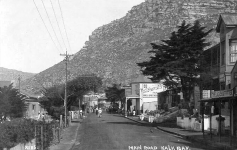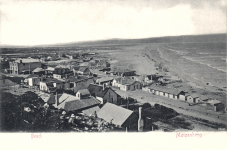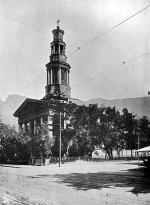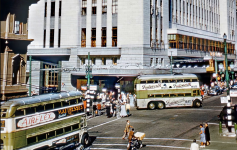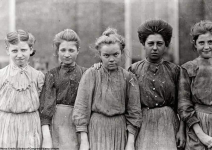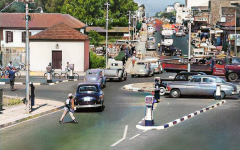You are using an out of date browser. It may not display this or other websites correctly.
You should upgrade or use an alternative browser.
You should upgrade or use an alternative browser.
History
- Thread starter satanboy
- Start date
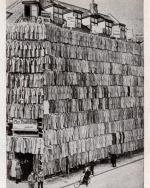
In 1936, a clothing store in Copenhagen, Denmark found itself with an excess inventory of men's spring and winter coats. To tackle this challenge, the innovative clothier devised a distinctive sales strategy. They constructed a scaffolding around their store building and adorned it with over a thousand overcoats, completely covering the structure from the roof to the sidewalk. This unconventional and eye-catching display captivated the attention of potential customers, resulting in a massive influx of people to the store. The situation escalated to the point where the police had to be called in to manage the crowds. Despite the police's intervention and subsequent order to remove the display, the resourceful proprietor managed to successfully sell all the overcoats, effectively resolving their overstock issue.

Robert Pershing Wadlow (February 22, 1918 – July 15, 1940), also known as the Alton Giant and the Giant of Illinois, was an American man who was the tallest person in recorded history for whom there is irrefutable evidence. He was born and raised in Alton, Illinois, a small city near St. Louis, Missouri.
Wadlow's height was 8 ft 11.1 in (2.72 m)

Robert Wadlow - Wikipedia
2,000-Year-Old Hologram Ring Features Face of Woman’s Deceased Son
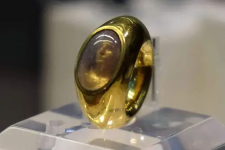

2,000-Year-Old Hologram Ring Features Face of 1st-Century Woman’s Deceased Son
This is an incredibly crafted memento found on the hand of a grieving mother.
 mymodernmet.com
mymodernmet.com

2,000-Year-Old Hologram Ring Features Face of 1st-Century Woman’s Deceased Son
This is an incredibly crafted memento found on the hand of a grieving mother.
Düber
Well-Known Member
- Joined
- Jul 20, 2020
- Messages
- 1,542
Those cars!View attachment 39941
Circle at Voortrekker Road Belleville 1951
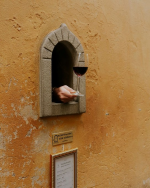
"Buchette del vino", or wine windows, are a peculiar feature of Florence
They are foot-high, dome-shaped holes in the thick, stone palazzi of the Renaissance city that six centuries ago were used to sell wine in a fiasco (glass bottle) without having to open a shop and avoid paying taxes. These wine windows also posed a useful anti-contagion way to sell wine during the epidemic of 1630-1633. At that time, the bubonic plague hit Florence hard, killing 12% of the city's population.

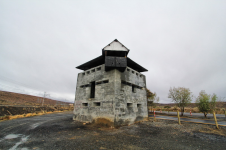

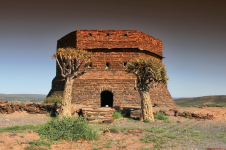
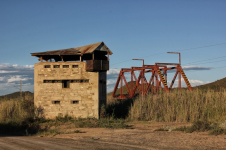
Blockhouses of the Karoo
During the Anglo-Boer War, the Brits built nearly 8 000 blockhouse fortifications running right across South Africa and along the major rail routes. These would be manned and the spaces between them patrolled.
The first fortifications consisted mainly of corrugated iron, a wondrous new arrival from Britain that had sheltered many a miner in South Africa since the early 1870s. Eventually made of mild steel with a hot-dip galvanized finish, the sheets of corrugated iron provided very little protection from the powerful Mauser, Mannlicher and Martini-Henry rifle fire of the Boer horsemen. And when it came to harsh Karoo winters and summers, you either froze or sweltered under corrugated iron.
So the British engineers came out and built more than 400 large blockhouses in a fancy variety of styles. Blockhouses erected in the Magaliesberg ranges, mostly on hilltops, were one-storey high and sported crenellated parapets, as if the designers were setting up mini-castles. The blockhouse at Broederstroom had a fireplace for winter comfort and year-round cooking. The little blockhouse that overlooks Prieska in the Northern Cape was built from the locally abundant Tiger’s Eye stone. Noupoort’s blockhouse looks like an old Dutch mill from the outside.

The exact location of the Frankish tower of the Acropolis built on the pilaster of the south wing of the Propylae.
It was built by the Franks after the crusades as they conquered Athens before it fell into the hands of the Turks and was turned into a salt warehouse and a place of imprisonment and torture.
It was finally torn down in 1874 as part of a more general strategic removal of all post-classical structures from the Acropolis rock.
© The Archaeologist

